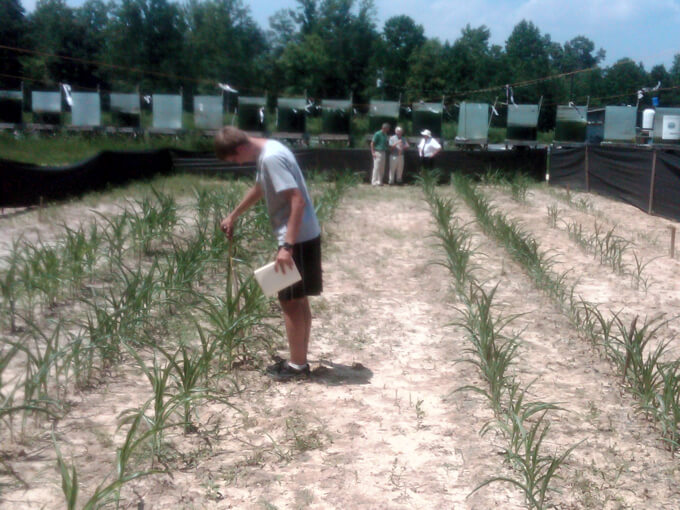
Whether you are a landscaper, golf turf manager, local farmer, corporate farming operator, or a homeowner preparing to fertilize your lawn, the story is the same: chemical fertilizer prices are blowing up, up, and away.
It’s a perfect storm with everyone needing the same chemicals (urea, DAP, MAP, and potash) during seasonal demand while dependent on a disabled global supply chain. These issues impact all synthetic fertilizer markets.
Key factors for agriculture, commercial grounds, golf, DIY and other applications:
- Overall demand already outpaced supply going into pandemic
- Pandemic transportation disrupted by import sanctions, port congestion, trucking and worker shortages
- Inflation affects commodities while emerging from pandemic
- Urea, DAP potash tied to global commodities external to US control
- Ukraine and Russia, significant fertilizer exporters, impinged by war
- Natural gas, as major fertilizer input, priced higher even under normal economic conditions
- Distribution costs increased by gasoline, diesel prices
This current economic condition is without precedent and no one factor is to blame.
Analysts publishing prices weekly consider a 5% move during a month as significant. Nitrogen from urea is up 7% at an all-time high of $954 according to the most recent report by Minneapolis-based DTN. Phosphorous from monoammonium phosphate is 11% closing near its peak in 2008 setting a record of $1,039.
By the time you are reading this an estimate on what you could expect to pay in your segment of the market is outdated.
What caused fertilizer to be made without organic matter?
So, what else affects this story? Is there an alternative and why all the chemicals in fertilizer anyway? What caused fertilizer to be made without organic matter?
In the 2008 book Alchemy of Air by Thomas Hager, a summary of fertilizer technology’s importance to society stated “At the dawn of the twentieth century, humanity was facing global disaster. Mass starvation, long predicted for the fast-growing population, was about to become a reality. A call went out to the world’s scientists to find a solution.”
Gee, sound familiar? Hence, chemical fertilizers were discovered.
Along with this discovery, nutrients held in the form of salts were unlocked. Nitrates, phosphates, and others offered much bigger yields as they can readily move into a soil’s solution. Roots slurp it up. There’s actually nothing wrong with the chemical salts. It’s just that the largest consumers of fertilizers have just been slow to recognize the consequences of repeated use of salts.
Metaphorically, mother earth is suffering from hypertension. Conventional wisdom opines that soils would greatly benefit from more organic matter and less salt.

Pass the pepper, please.
The synthetically made fertilizer was so effective at crop yield that common practices such as manure spreading on fields and composting animal and food wastes, including humanity’s own poop, were abandoned. The primary means to promote food growth rested with the chemists. Their idea to make super fertilizers helped deal with the increase of 2 billion souls to 4 billion. Now, a hundred years later, with the same planet but double the inhabitants at 8 billion, the situation begs for another, better solution.
Long term, the national question arises whether US chemical fertilizer manufacturers can and will increase production to meet domestic demand as they did until 20 years ago. National security depends on it to safeguard the North American breadbasket.
Mergers from the 1980’s consolidated manufacturing. Nitrogen suppliers contracted 72% to just a dozen companies by 2008. Production for the overall demand was met or exceeded domestically until greater quantities being imported reached the current approximately 50% level. 75% of the world’s nitrogen is from 4 companies that are often in other countries with scarce resources that have control over the front-end supply chain.
It comes as no surprise, then, that the USDA is asking the same question via its recent notice:
USDA announces Plans for $250 Million Investment to Support Innovative American-made fertilizer to give US Farmers more choices in the Marketplace (Seeks Public Input to Identify Competition Challenges in Seed, Fertilizer, Other Agricultural Inputs, and Retail Markets)
In contrast, savvy professionals started relying on Nutrients PLUS® twenty years ago.
The Clarus® brand line of products uses waste-to-fertilizer technology that growers of all types embraced to cut back on synthetic fertilizers. 150,000 less tons of Nitrogen and Phosphorous were eliminated from polluting the environment.
Sources are wide-ranging residuals: meals from animal renderings bone and blood, plant-based meals corn, alfalfa, and soy or poultry manure, cow manure, and sludges from sites like retention ponds for using algae to extract nutrients or biosolids that are available from utilities. They are all rich in organic matter offering a clear choice compared to total synthetics. Organic matter with carbon adds important energy for biological processes – to live vibrantly in soils.

Carbon naturally holds nutrients patterned more closely to how plant roots get their nutrition.
In addition, agriculture’s estimated 14 percent contributions to greenhouse gases (GHG) is offset through carbon sequestration at least 200 times greater than how this waste is typically disposed (see FIGURE 1). GHG is reduced further by a carbon footprint advantage through Clarus® ground-breaking logistics and transport compared to the commercial distribution of synthetic fertilizers.
Innovative Clarus® fertilizer also is proven to be more efficient and friendlier to the environment by preventing both runoff and leaching into waterways. Nutrient loading to ground and surface waters using prescriptive organic fertilizer blends optimizes plant uptake. The nutrients stay where needed. And compared to chemical fertilizer costs, return from cycling organic matter wastes as fertilizer adds to the long list of factors in a winning economic and environmental equation. Redirecting organic matter from current disposal practice into safe and useable forms demonstrates The NP Way!
Science-based applications by Clarus® pros are supported by long-term university studies. This further validates the cost-effective prescription for plant nutrition, a clean environment and what is best for our communities.
Its The Clarus® Story- the new chapter with more innovation, patent-pending technologies, and expansion to come.

University Research: https://www.claruschoice.com/clarus-technology/research/
Instagram: https://www.instagram.com/claruschoice/
Facebook: https://www.facebook.com/ClarusChoice
Twitter: https://twitter.com/ScreaminGreenF
Nutrients PLUS® Clarus®
Brand names and markets served include: Screamin’ Green® distributed to the consumer by retail lawn and garden dealers; Nutrients PLUS® Clarus® PRO distributed by agricultural and professional landscaper outlets; Nutrients PLUS® Clarus® 100 that are 100% natural, such as Nutrients PLUS® 4-4-2 with 9% Ca listed by Organic Materials Review Institute (OMRI) for growers following the USDA National Organic Program (NOP).
The National Park Service for a 2014 rejuvenation of the National Mall in Washington, DC that met sustainable landscape standards and results, led to expanded use of Nutrients PLUS® fertilizers including all monuments and museums throughout the District. Nutrients PLUS®’ fertilizer products are registered and sold in 44 states and 3 countries.
Nutrients PLUS® is a long-term sponsor of ongoing research at Virginia Tech, Old Dominion, Ohio State, and Cal Poly universities, is committed to product innovation and development, and serves as a consultant within the fertilizer industry to promote its mission: to lead self-regulatory actions to improve water quality and the environment by reducing the overuse of chemical fertilizers through sound, research-based programs, and fertilizers formulated with natural ingredients.


